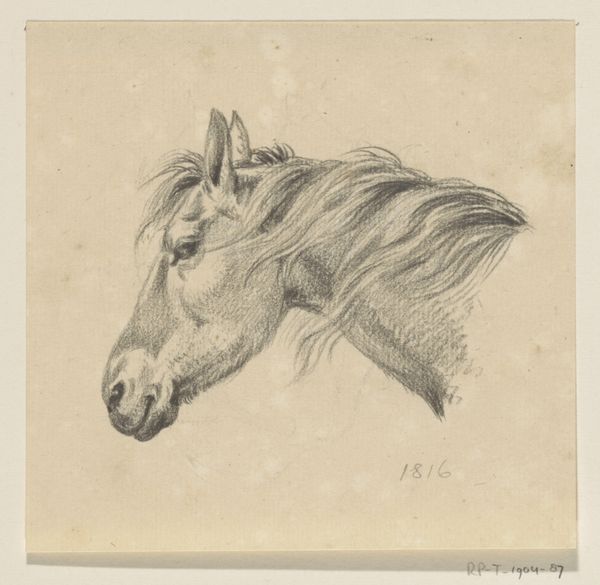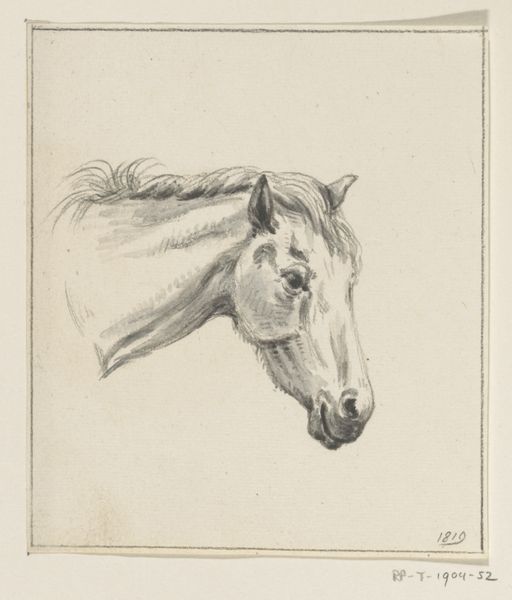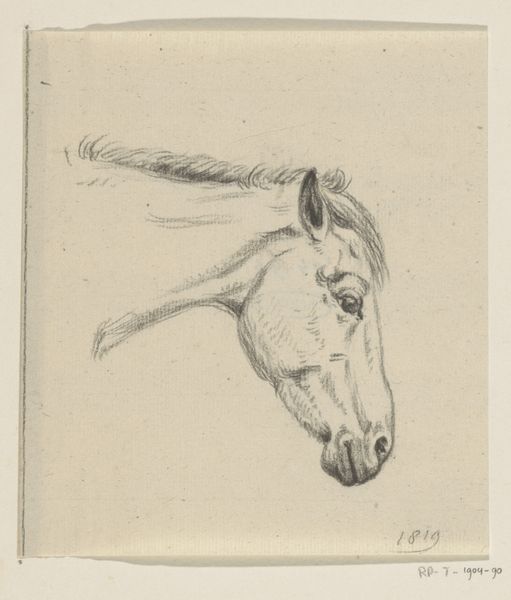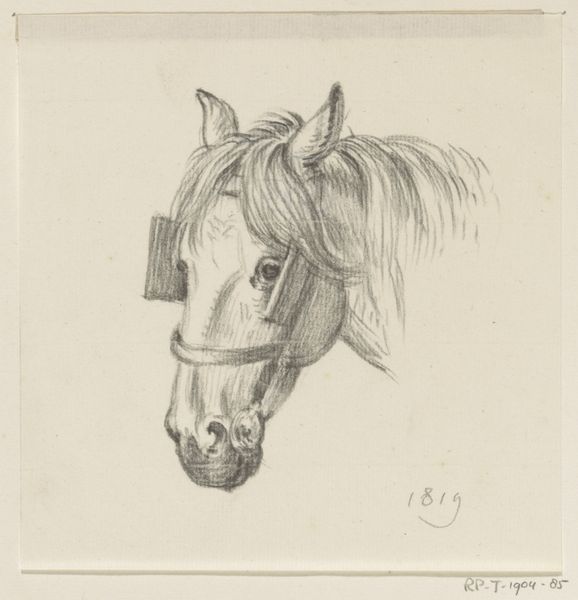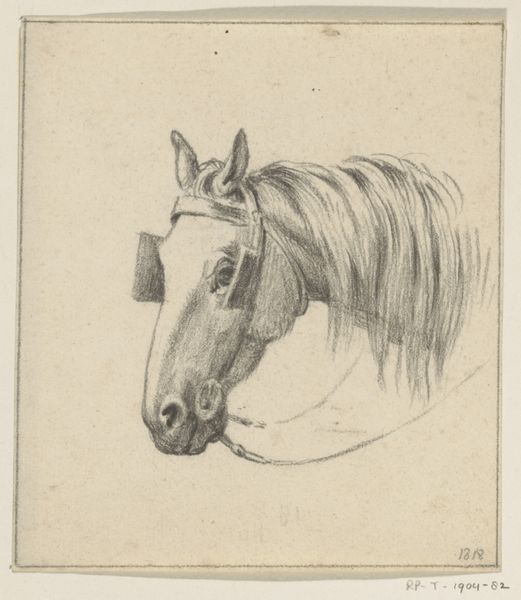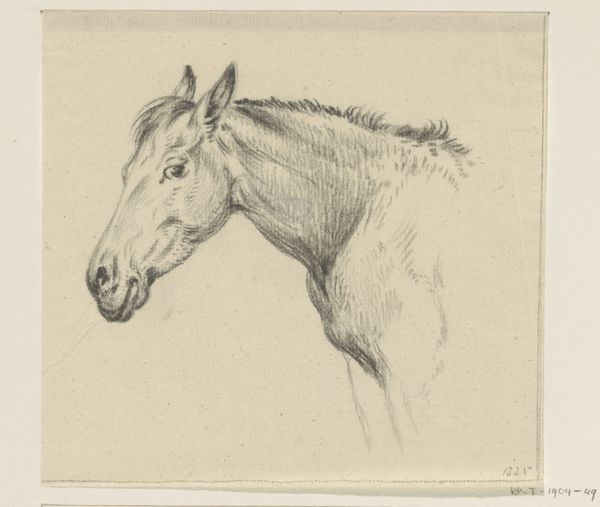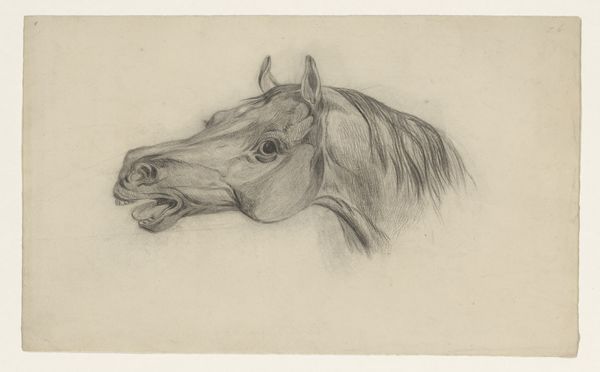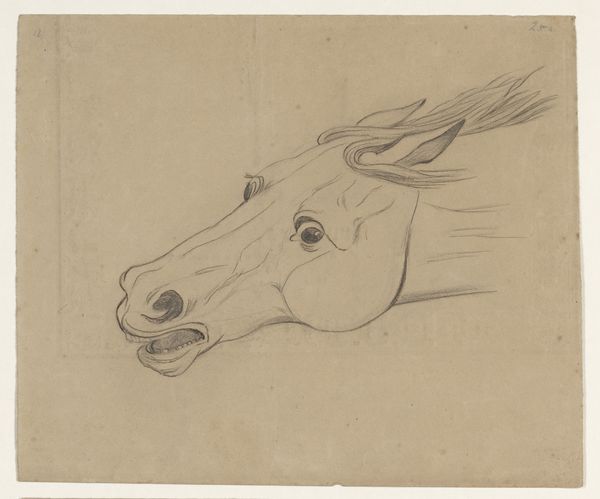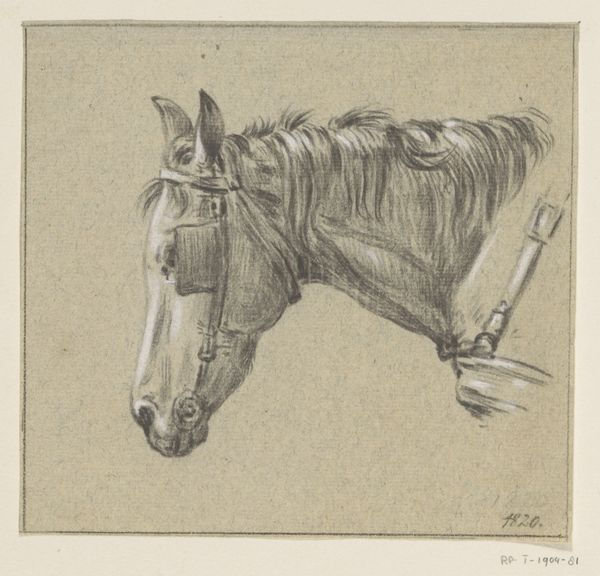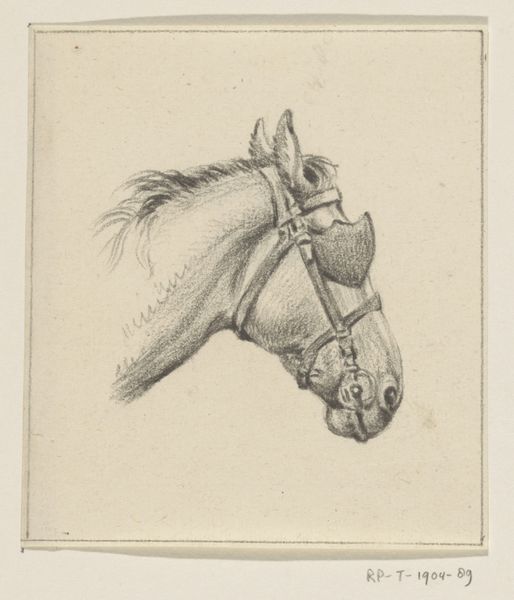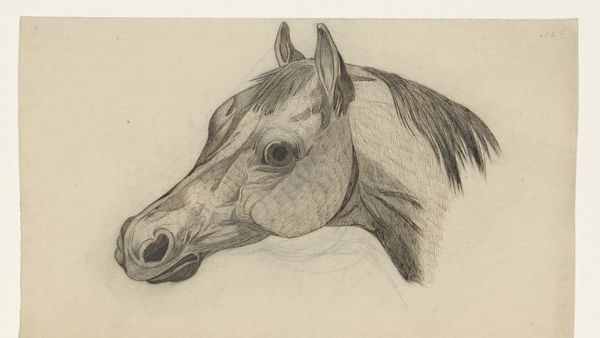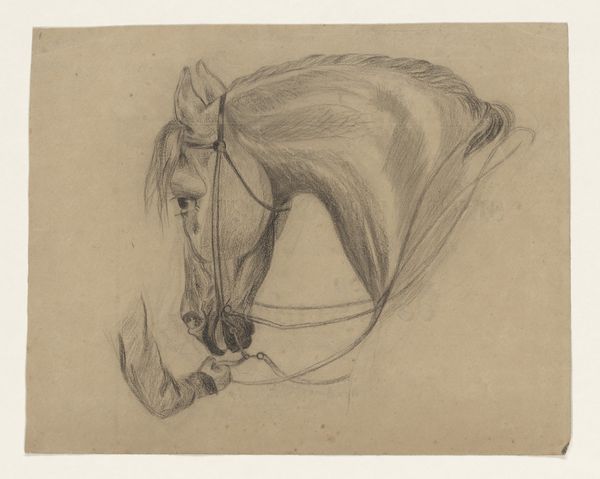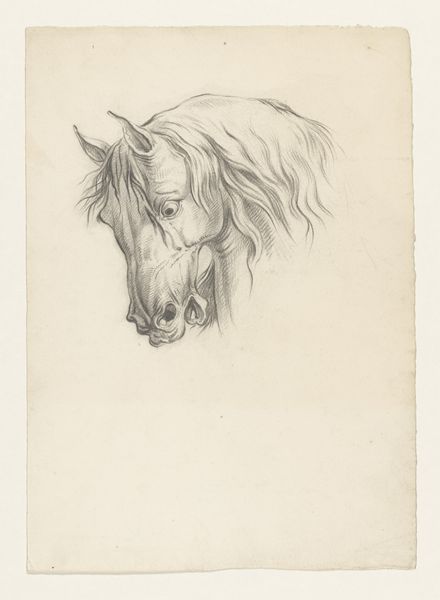
drawing, pencil
#
portrait
#
drawing
#
neoclacissism
#
pen sketch
#
pencil sketch
#
landscape
#
pencil
#
horse
Dimensions: height 109 mm, width 113 mm
Copyright: Rijks Museum: Open Domain
Curator: Take a look at this compelling sketch of a horse's head by Jean Bernard, crafted around 1817 and held here at the Rijksmuseum. What catches your eye? Editor: The fluidity! The way the pencil just seems to dance across the page, capturing the animal's spirit with such a delicate hand. It's like catching a fleeting dream. Curator: Bernard was working in the Neoclassical style, where precise observation and ideal forms were highly valued. It’s intriguing how even a study like this, likely preparatory, speaks to those values through the considered application of pencil on paper. Editor: "Considered" is a good word. There's a tension, isn’t there? It's so carefully rendered, yet it feels so free. Like the artist just unleashed their inner horse whisperer onto the page. It's more than just an animal head; it is kind of soul portrait, isn't it? Curator: Indeed. The means of production were simple: paper and pencil, but think of the access to horses at this time, their presence as symbols of labour, status, even war. Consider also how drawing was central to artistic training; a way of understanding form, volume, light. This isn't simply a likeness, but a demonstration of skill intertwined with social significance. Editor: It's strange, looking at it, I imagine the air of the stable, that comforting smell of hay and horseflesh, maybe the sound of a faraway carriage... It almost takes me to the countryside with my childhood horse riding experiences! How about you? Does this simple sketch evoke something, considering your interest in materials? Curator: I am more interested in what kind of pencil it was. Knowing if it was hard or soft helps understand how it influenced the texture and contrast achieved here, shaping not only its immediate reception, but also how the artwork stands up over time in relation to how and where those materials are obtained. Editor: Ah, so your focus is more about lead and labor conditions back in 1817! Always digging into the practicalities. Curator: Exactly. Everything connects, and our experience with art stems from materials and techniques of making it. It's interesting how much can be deciphered from something seemingly simple as "pencil". Editor: Well, from my perspective, maybe the pencil became a magic wand in the hands of the right person. Thanks for taking me to see this artwork. It really got me thinking. Curator: It did so for me too. Let's go!
Comments
No comments
Be the first to comment and join the conversation on the ultimate creative platform.
